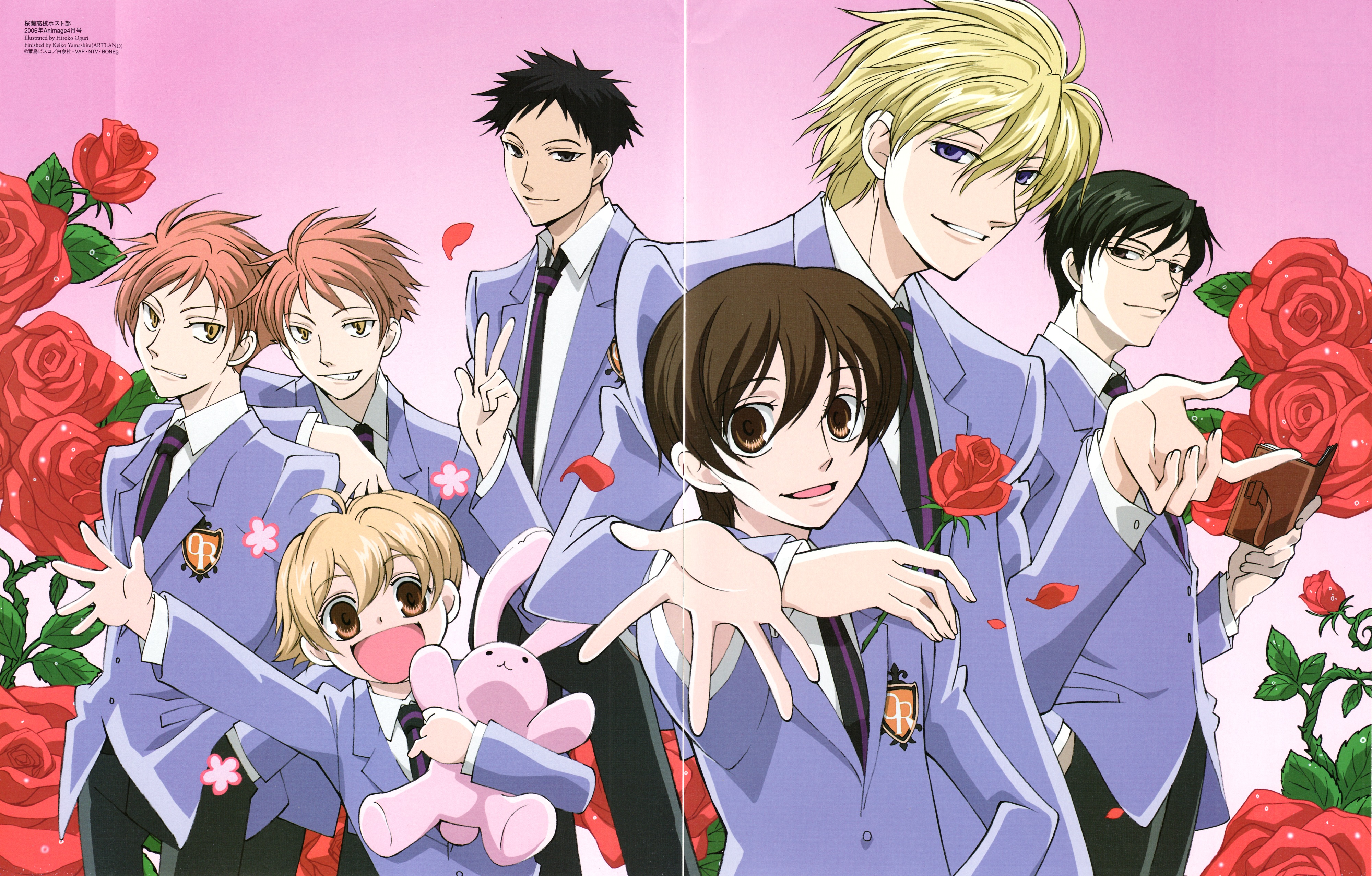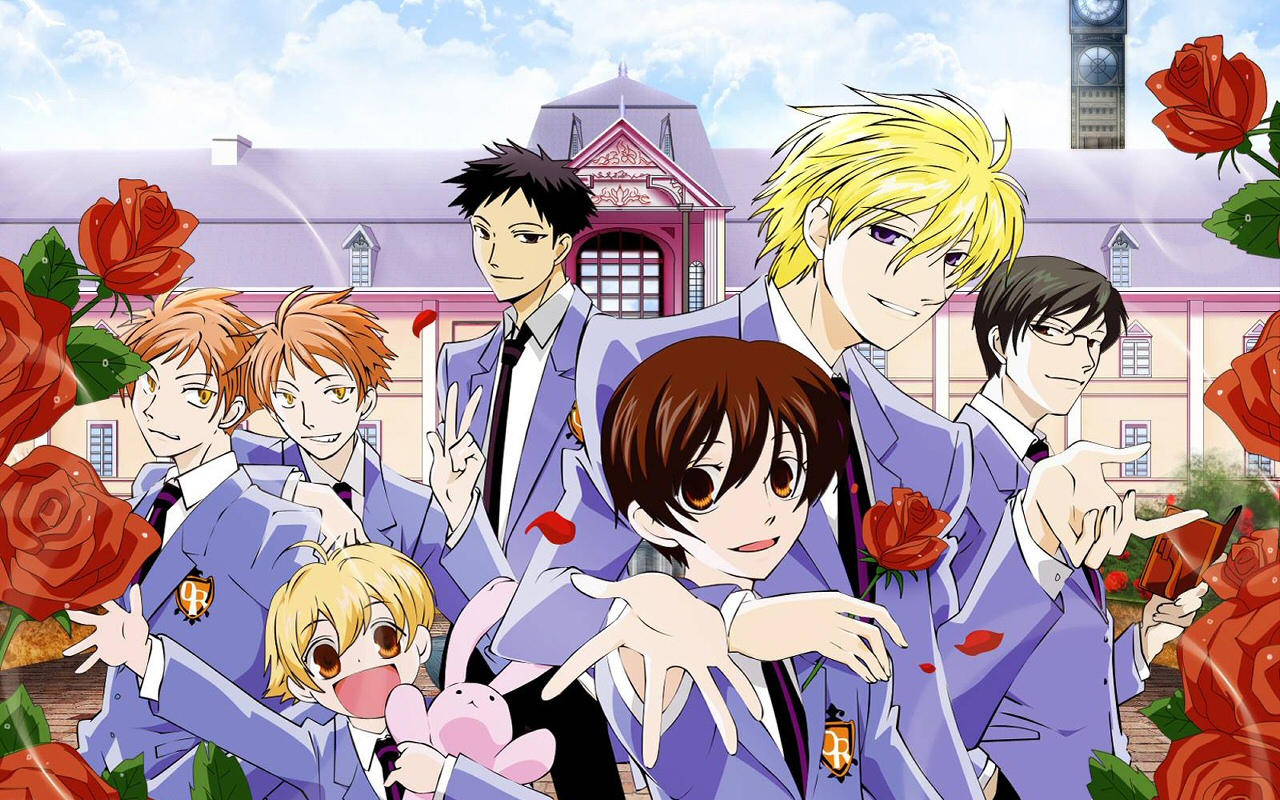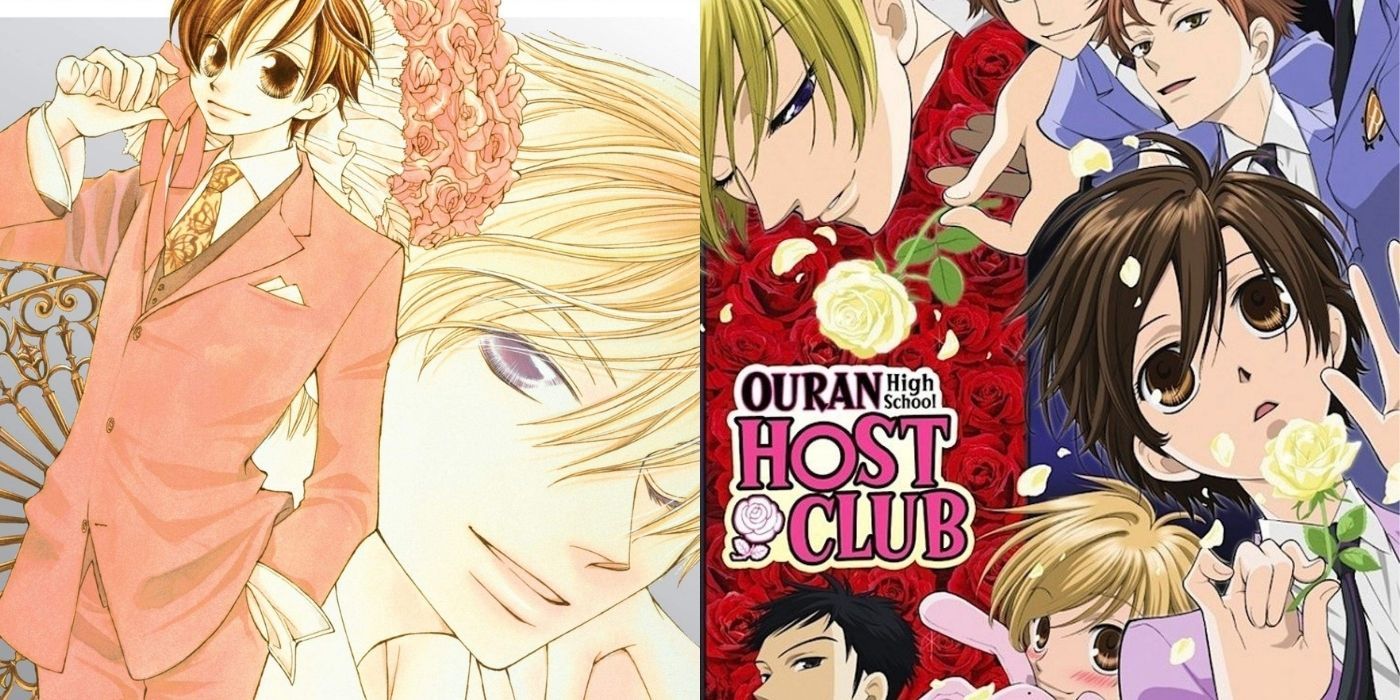Manga Host Club: Yo, what’s up, anime peeps? Dive headfirst into the totally glam world of manga’s hottest trend! We’re talkin’ ridiculously good-looking guys, crazy drama, and enough romance to make your head spin. Get ready to explore the evolution of this totally addictive genre, from its rise to its current mega-popularity. We’re breaking down the character archetypes, the wild storylines, and the art styles that make these manga so captivating.
Prepare for a seriously awesome ride!
This exploration covers everything from the typical character tropes—the charming leader, the playful prankster, the mysterious cool guy—to the unique storylines that explore themes of friendship, romance, and social dynamics within the high-stakes world of a host club. We’ll also analyze how different manga artists portray the clubs and their environments, highlighting the visual elements that create the overall vibe.
Discover how beast tamer manga has transformed methods in this topic.
Plus, we’ll uncover the cultural impact and reception of this genre, both in Japan and worldwide, and discuss its influence on other forms of media.
Manga Host Club: A Deep Dive into the Phenomenon
The “Manga Host Club” genre, a vibrant sub-section of shoujo manga and anime, has captivated audiences worldwide with its blend of romance, comedy, and unique social dynamics. This genre explores the world of elite host clubs, typically populated by attractive young men who cater to female clientele, offering companionship and entertainment. This article delves into the popularity, character archetypes, thematic elements, artistic styles, and cultural impact of this captivating genre.
Evolution of the Manga Host Club Theme
The “Manga Host Club” theme has evolved significantly since its inception. Early works might have focused more on the escapist fantasy of interacting with charming young men, while more recent iterations explore complex themes of gender roles, social class, and the nature of relationships. The portrayal of host clubs themselves has also shifted, moving from idealized settings to more nuanced representations reflecting both the glamorous and potentially exploitative aspects of this industry.
Key Demographic Groups Interested in Manga Host Club Media
The primary demographic for “Manga Host Club” media is young women and girls, particularly teenagers and young adults. However, the genre’s appeal extends beyond this core audience, attracting fans interested in romance, character-driven narratives, and visually appealing art styles. The appeal to a broader audience is partially due to the diverse characters and relatable themes present in many series.
Comparison of Host Club Portrayals in Different Works
Different “Manga Host Club” works present varying portrayals of host clubs. Some focus on the glamorous and exciting aspects, showcasing the hosts’ charm and the luxurious atmosphere. Others delve into the more complex realities, exploring the pressures faced by the hosts and the ethical considerations surrounding the industry. This contrast reflects the evolving understanding and representation of host clubs within the genre.
Impact of Popular Manga Host Club Works on Broader Media Trends
Popular “Manga Host Club” works have influenced broader media trends, particularly in the realm of romance and character design. The genre’s focus on complex relationships and charming male characters has impacted other anime, manga, and even live-action adaptations. The unique aesthetic of the genre has also contributed to broader visual trends in animation and character design.
Character Archetypes in Manga Host Club Stories
Understanding the common character archetypes is crucial to appreciating the dynamics within “Manga Host Club” narratives. These archetypes often fall into predictable, yet engaging, roles that drive the plot and relationships.
| Archetype Name | Description | Motivations | Common Traits |
|---|---|---|---|
| The Popular Host | The charismatic and effortlessly charming leader of the host club. | Maintaining his status, attracting customers, and sometimes, a genuine connection with the female lead. | Confident, outgoing, skilled in social interactions, often a bit mischievous. |
| The Quiet Host | Often overlooked, but possesses a hidden depth and unique charm. | Gaining recognition, overcoming insecurities, finding a place within the club. | Shy, observant, talented in a specific area (e.g., art, music), loyal. |
| The Rich Customer | Frequently visits the club, often throwing lavish parties and showering the hosts with gifts. | Seeking attention, escaping loneliness, or possibly exploring forbidden desires. | Spoiled, demanding, but sometimes reveals a hidden vulnerability. |
| The Shy Customer | Initially hesitant to interact, but eventually forms a close bond with a specific host. | Seeking companionship, overcoming shyness, finding someone who understands her. | Reserved, introspective, often possesses a kind heart. |
Role of the Main Female Character
The main female character often serves as the outsider who disrupts the established dynamics of the host club. She provides a unique perspective, challenges the hosts’ assumptions, and often becomes the catalyst for personal growth and change within the group. Her presence often forces the hosts to confront their own emotions and motivations.
Relationships Between Hosts
Relationships between hosts are often complex, ranging from playful rivalries to deep bonds of friendship and loyalty. These relationships often reflect the complexities of human connection and the challenges of navigating social dynamics within a unique environment. The bonds between hosts frequently evolve and deepen throughout the narrative.
Design of a New Host Character
A new host character, named Ren, could be introduced. Ren is a skilled calligrapher with a quiet and contemplative personality. His backstory involves a strict upbringing that suppressed his artistic expression. His unique trait is his ability to create personalized calligraphy pieces for customers, offering a unique and intimate experience.
Thematic Elements and Storylines in Manga Host Club Narratives
Recurring themes within “Manga Host Club” narratives provide a framework for exploring various aspects of human relationships and social dynamics.
Recurring Themes: Romance, Friendship, and Social Class
Romance, naturally, plays a central role, often focusing on the evolving relationships between the hosts and the female protagonist. Friendship among the hosts is equally important, showcasing the development of strong bonds despite their competitive environment. Social class is another recurring theme, with the stark contrast between the wealthy clientele and the often less privileged hosts.
Exploration of Complexities in Relationships and Social Dynamics
The narratives often delve into the complexities of relationships, exploring themes of love, jealousy, and betrayal. The social dynamics within the host club and the broader societal context are also explored, revealing the nuances of class differences and societal expectations.
Common Plot Devices and Narrative Structures
Common plot devices include misunderstandings, unexpected twists, and the gradual unfolding of character backstories. The narrative structures often involve a central conflict or mystery that unravels throughout the story, keeping readers engaged.
Handling of Gender Roles and Expectations
Different “Manga Host Club” stories handle gender roles and expectations in various ways. Some challenge traditional gender norms, while others reinforce them. The representation of gender roles often reflects the evolving societal views on gender identity and expression.
Visual and Artistic Styles in Manga Host Club
The visual aspects of “Manga Host Club” manga are integral to the overall experience, contributing significantly to the atmosphere and emotional impact.
Typical Art Styles: Character Design and Visual Aesthetics, Manga host club
The art style often features stylized character designs, emphasizing beauty and elegance. The visual aesthetics typically involve vibrant colors, detailed backgrounds, and expressive character features. The overall aesthetic often conveys a sense of glamour and sophistication.
Visual Representation of Host Clubs and Environments
The visual representation of host clubs varies across different works. Some portray opulent and luxurious settings, while others focus on more intimate and realistic environments. The visual details often reflect the tone and themes of the specific story.
Key Visual Elements Contributing to Atmosphere and Tone
Key visual elements include character expressions, clothing styles, and background details. The use of color, lighting, and composition also plays a crucial role in shaping the overall atmosphere and tone of the manga.
Impact of Visual Style on Emotional Impact and Storytelling

Consider a scene where a host is revealed to have a troubled past. The artist might use subdued colors, close-up shots of the character’s sorrowful expression, and a dimly lit background to emphasize the character’s emotional state. This visual storytelling amplifies the emotional impact of the scene, allowing the reader to connect with the character on a deeper level.
Cultural Impact and Reception of Manga Host Club
The “Manga Host Club” genre has made a significant impact culturally and has received a mixed reception from audiences and critics.
Cultural Significance in Japan and Internationally
In Japan, “Manga Host Club” reflects broader societal attitudes towards gender roles and social class. Internationally, the genre has introduced Japanese culture and storytelling styles to a wider audience, sparking interest in similar themes and narratives.
Reception by Critics and Audiences
Reception has been mixed. Some praise the genre’s exploration of complex themes and charming characters, while others criticize its portrayal of gender roles and potentially unrealistic depictions of host clubs. The reception often varies depending on cultural background and individual preferences.
Controversies and Debates Surrounding the Portrayal of Host Clubs
Debates often arise regarding the ethical implications of portraying host clubs, particularly concerning the potential for exploitation and the romanticization of potentially problematic relationships. These discussions highlight the need for nuanced and responsible storytelling.
Influence on Other Forms of Media

The “Manga Host Club” theme has influenced other forms of media, including video games and live-action adaptations. These adaptations often draw inspiration from the genre’s character archetypes, visual styles, and thematic elements, expanding its reach and influence.
So, there you have it—a whirlwind tour through the captivating world of Manga Host Club! From the dazzling personalities of the hosts to the intricate relationships and social dynamics at play, this genre offers a compelling blend of romance, drama, and humor. Whether you’re a seasoned manga enthusiast or just curious about the hype, we hope this deep dive has provided a fresh perspective on this increasingly popular and influential genre.
Now go forth and discover your next obsession!

